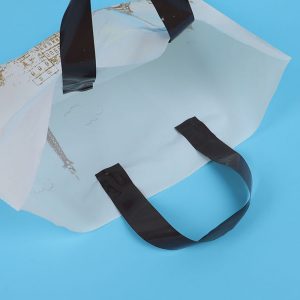- Flexographic Printing:
http___www.bigleaguekickball.com_about_ overnight Soma order Flexographic printing, also known as flexo printing or surface printing, is a popular choice for printing on paper bags. It is a versatile and cost-effective printing method suitable for high-volume production. Flexographic printing is commonly used for simple designs, logos, and text, making it ideal for branding purposes. Here’s how the process works:
- Plate Preparation: A flexible printing plate is created, where the design to be printed is etched or engraved onto the plate. Each color used in the design requires a separate plate.
- Ink Application: The ink is transferred onto the printing plate, and a rotating cylinder with a rubber or photopolymer surface (known as anilox roll) picks up the ink from the plate.
- Printing: As the paper bag moves through the printing press, the anilox roll rotates against the bag, transferring the ink from the roll onto the bag’s surface. This process is repeated for each color, and registration marks are used to ensure precise alignment of the different colors.
- Drying: Once the bags are printed, they pass through drying units where the ink is dried quickly using heat or ultraviolet (UV) light.
soma no prescription overnight shipping Flexographic printing is well-suited for simple and repetitive designs, making it an efficient choice for bulk production of paper bags.
- Offset Printing:
Offset printing, also known as lithographic printing, is another widely used method for printing on paper bags, especially when higher print quality and intricate designs are required. Offset printing is a more complex process than flexographic printing, but it offers greater color accuracy and finer details. Here’s how it works:
- Plate Preparation: In offset printing, the design is transferred to a metal plate through a process of exposure and chemical treatment. Each color requires a separate plate.
- Ink Transfer: The ink is applied to a rubber blanket cylinder, which then transfers the ink to the paper bag. Unlike flexographic printing, offset printing uses an indirect printing method, where the ink is first transferred to the blanket cylinder before being applied to the bag’s surface.
- Printing: The paper bag passes through the offset printing press, and the ink from the blanket cylinder is transferred onto the bag’s surface. The process is repeated for each color, and precise registration is maintained for accurate color alignment.
- Drying: After printing, the ink on the bags is dried through evaporation or the use of drying units.
Offset printing provides high-quality results, making it suitable for printing detailed images, gradients, and complex designs on paper bags. It is often used for premium packaging and custom-designed bags.
Both flexographic and offset printing methods have their advantages and are chosen based on the specific requirements of the paper bag printing job. Factors such as the desired print quality, the complexity of the design, the number of colors, and the production volume all influence the selection of the appropriate printing method.













